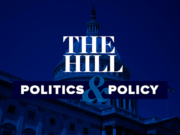This piece originally appeared in Wall Street Journal on April 7, 2022.
I wouldn’t dream of telling Elon Musk, who recently became Twitter’s top shareholder, how to turn a profit. But I do know something about free speech. If Mr. Musk is serious about making the social-media behemoth a force for free speech, here are 10 things he can do:
1. Leave more content up. Twitter has rules about posts, and the bulk of enforcement is done through artificial intelligence. The algorithms err on the side of taking down material that might violate Twitter rules. Instead, they should err on the side of leaving questionable material up until there has been human review.
2. More aggressively screen complaints. Currently, there is too much bad-faith reporting done for the purpose of getting controversial, but legitimate, content taken down. For every 10 content moderators tasked with taking down content, hire a content defender, whose job is to advocate for keeping or putting content back up. Err on the side of speech, not censorship.
3. Create an easy-to-use, rapid, transparent appeals process for takedowns of material, and especially for banned or suspended accounts.
4. Stop caving in to organized campaigns to remove particular speakers. Twitter doesn’t have to take sides in the culture wars. Say nothing, and let the controversy subside.
5. Don’t respond to overt requests from government officials to take down content. When government officials covertly request content removal, expose them, and ignore the request. When government officials tell you to “watch out” for particular misinformation, be skeptical—of both their intentions and their accuracy.
6. Eliminate the “fact-checking” program. It is biased and, because people know it is biased, has had the opposite of its intended effect. It has destroyed Twitter’s credibility.
7. Conduct an outside audit of Twitter’s policy of removing “false or misleading information” about Covid. In particular, ask: a) How much “misinformation” was removed that is now considered true?; b) What effect did removal have on the overall debate?; c) Did it prevent or delay correct information from reaching the public?; and d) Did removal actually stop the information’s spread? Use the knowledge gained to review other policies, and apologize where appropriate.
8. Review the “hateful conduct” policy to be sure that it isn’t squelching public discussion on contested issues, and change the policy where needed. For example, not every instance of or reference to “misgendering” should automatically be removed as hateful.
9. End the ban on political ads. Since 2019, Twitter has banned political ads. Not just ads from Donald Trump, Joe Biden, and other candidates, but any ad that discusses any issue, from climate change to gun rights to an ad promoting a local ballot measure. Low-cost ads on Twitter are a huge benefit to grass roots organizations. As Twitter is anything but a politics-free zone, it’s hard to see a downside to allowing political advertising on the same terms as commercial advertising.
10. Stop supporting congressional legislation that would reduce speech, such as the misnamed “Honest Ads Act.” Make the company an advocate for free speech, not censorship.
These steps would go a long way toward boosting Twitter’s image and, more important, making it a positive force for democracy—in Mr. Musk’s words, a true “public town square.”














